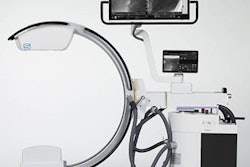Tuberculosis is among the top 10 causes of death in the world, yet the limited availability of chest x-ray interpretation in developing countries is a barrier for triage and screening for the disease. In March, the WHO recommended the use of computer-aided detection applications in chest radiography for tuberculosis and set targets of 90% sensitivity and 70% specificity for deep-learning models.
The researchers trained a model and tested its performance compared to experienced readers on a combined test set spanning China, India, the U.S., Zambia, and an independent mining population in South Africa. They found the deep-learning model's area under the receiver operating characteristic (AUC) curve was higher, with an AUC of 0.90. The model's sensitivity (88%) was also higher than that achieved by the readers, while its specificity (79%) was noninferior to the radiologist readers (84%).
In addition, simulations using the model as a prioritization tool for confirmatory testing showed it could potentially reduce the cost per positive case detected by up to 80% compared with using confirmatory testing alone, the team found.
"Our [deep-learning system] generalized to five countries, and merits prospective evaluation to assist cost-effective screening efforts in radiologist-limited settings," wrote the group, including senior software engineer Sahar Kazemzadeh, who will present the study.
Check out this afternoon session for the details.



















